Tracking macronutrients like protein, carbs, and fats is now easier with AI tools that analyze your meals quickly and accurately. These apps use technologies like photo recognition, LiDAR, and AI-driven insights to simplify meal logging, estimate portion sizes, and provide detailed nutritional breakdowns. Here’s a quick look at the top options:
- What The Food: Free app with photo-based meal analysis and ~98% accuracy for common foods. Automatically categorizes food groups and estimates serving sizes.
- SnapCalorie: Uses LiDAR for precise portion estimation and detailed macro tracking. Great for mixed meals but works best in good lighting.
- Cal AI: Combines photo recognition, barcode scanning, and manual entries for flexible tracking. Affordable premium tier with personalized targets.
- MyFitnessPal: Extensive food database with voice logging and barcode scanning. Lacks photo-based portion estimation but integrates with fitness trackers.
- HealthifyMe: Features an AI nutritionist, "Ria", for personalized plans. Covers diverse foods and offers tailored meal tracking.
These tools cater to U.S. users with imperial measurement units, local food databases, and integration with popular fitness apps. Whether you prefer free options, advanced features, or personalized plans, there’s a tool to match your needs.
Quick Comparison
| Tool | Key Features | Serving Size Estimation | Price (Monthly) | Best For |
|---|---|---|---|---|
| What The Food | Photo-based analysis, free to use | Estimates from photos | Free | Simple, fast, and no-cost tracking |
| SnapCalorie | LiDAR tech for portion accuracy | Highly precise | $9.99 (premium) | Accurate portion tracking with mixed meals |
| Cal AI | Photo, barcode, and manual logging | Photo-based, adjustable | $7.99 (premium) | Flexible tracking and affordable premium |
| MyFitnessPal | Voice logging, barcode scanner | Manual or barcode-based | $19.99 (premium) | Extensive database and fitness integration |
| HealthifyMe | AI nutritionist, meal planning | Manual or visual guides | $12 (premium) | Personalized plans and diverse food options |
These tools simplify macro tracking and help you stay consistent with your nutrition goals. Whether you’re looking for free options or advanced features, there’s a solution tailored to your preferences.
The 3 Best AI Calorie Tracking Apps in 2025
1. What The Food
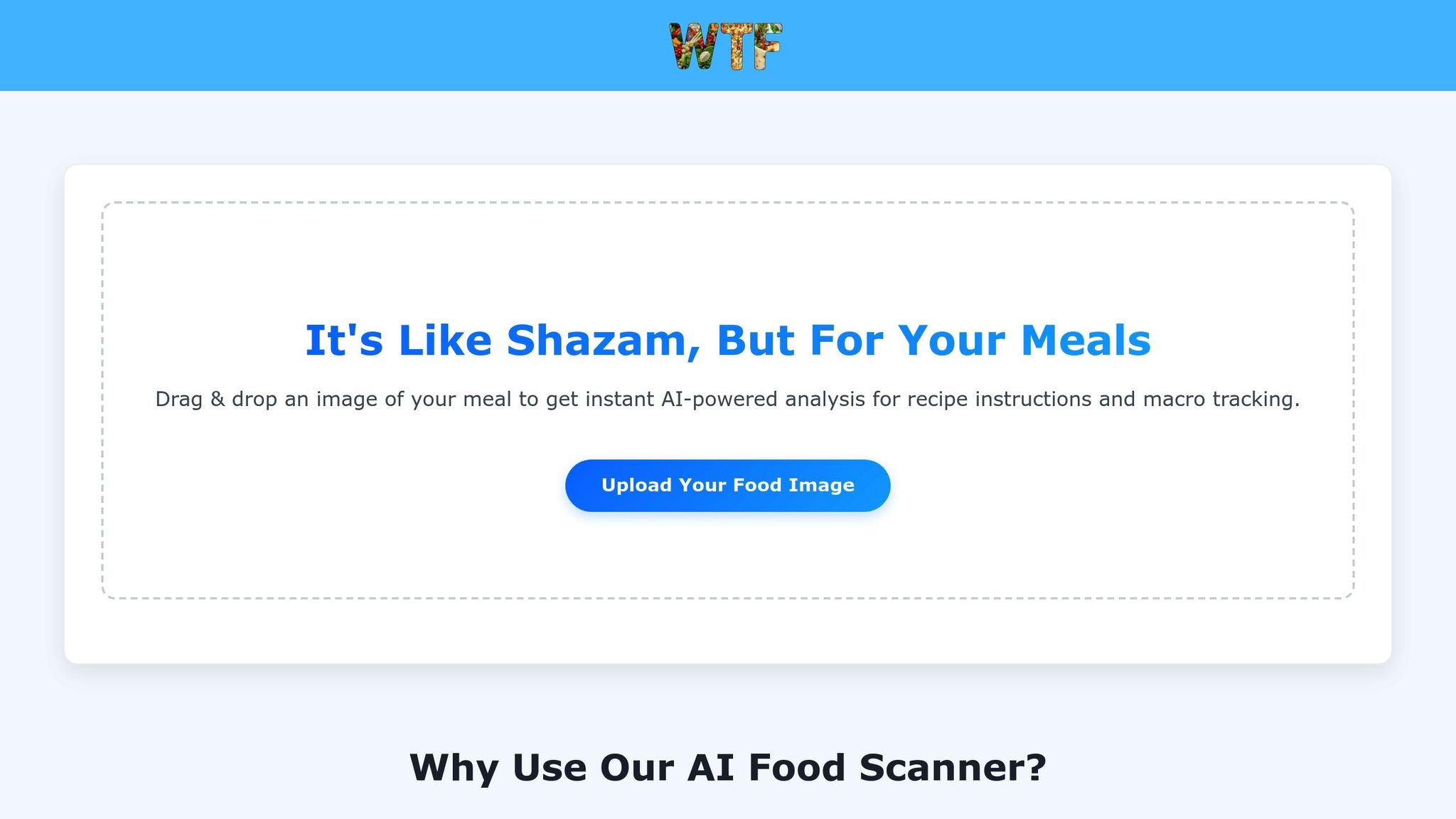
What The Food is a free AI-powered nutrition app that takes the hassle out of tracking your meals. Instead of manually logging what you eat, you can simply snap a photo, and the app provides a quick and detailed nutritional analysis.
AI Food Detection and Macro Tracking Accuracy
The app’s AI engine is designed to deliver highly accurate food detection and nutrient analysis. For most common foods and standard dishes, it offers estimates with an impressive ~98% accuracy. Using advanced computer vision and a robust database, the system can accurately detect and label foods in your meals.
What makes it even more impressive is its ability to analyze multiple items in a single image. Whether it’s a full plate of food or a multi-course meal, the AI breaks down each component and provides a detailed nutritional profile for everything on your plate.
Food Group Analysis: More Than Just Calories
What The Food goes beyond simple calorie counting by offering a deep dive into food group analysis. It categorizes your food into major groups like proteins, grains, vegetables, fruits, and dairy, while also breaking down the macros for each. For example, if you’re having a breakfast of eggs, toast, and bacon or a burrito with tortilla, beans, cheese, and salsa, the app identifies each ingredient, assigns it to the right food group, and shows how each contributes to your overall nutrition. This level of detail also helps with more accurate serving size estimates.
Smart Serving Size Estimation
One of the standout features of What The Food is its ability to estimate serving sizes automatically. By analyzing factors like food shape, color, and texture, the app calculates portion sizes based on the plate area and food volume. This means you don’t have to worry about weighing or measuring your food manually. Plus, if the AI’s estimates need tweaking – especially for non-standard meals – you can review and adjust them before finalizing your meal log, ensuring better accuracy.
Designed for U.S. Users
What The Food is tailored specifically for users in the U.S., displaying nutritional data in familiar imperial units like ounces, pounds, and cups. It relies on U.S.-based food databases to provide calorie and macro values, aligning with American dietary guidelines and measurement standards. Beyond just tracking, the app also offers recipe suggestions. These recipes are personalized to meet your macro goals and food group preferences, making meal planning a breeze.
2. SnapCalorie
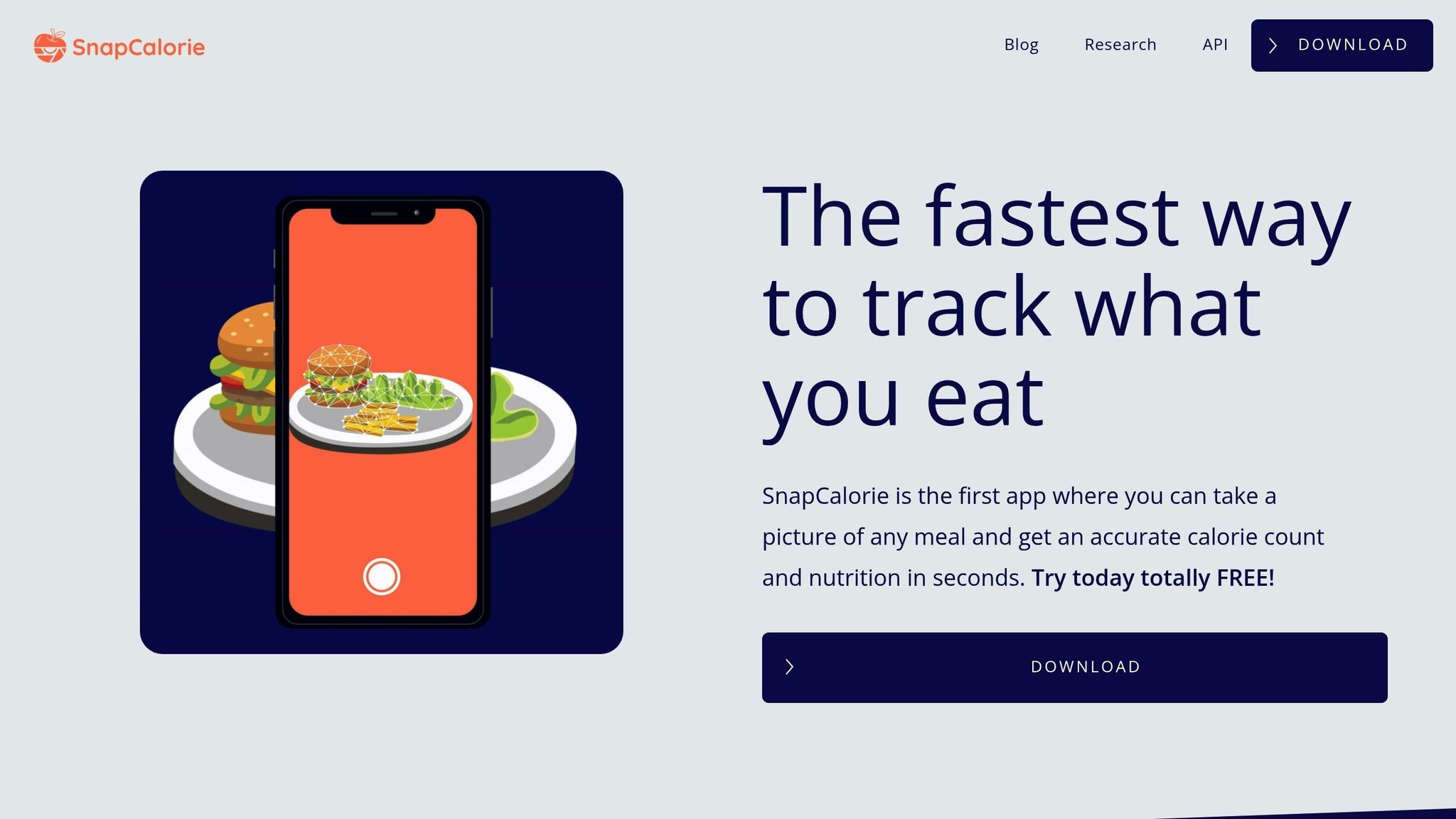
SnapCalorie takes AI nutrition tracking to the next level by using LiDAR technology to capture meal images with a single shot. This advanced depth-sensing tech ensures more accurate nutritional tracking, especially for meals with a mix of different food items.
Detailed Food Group Analysis
SnapCalorie breaks down the nutritional profile of each food item in detail, offering insights into macronutrients and food groups. It categorizes contributions from proteins, grains, vegetables, fruits, and dairy, giving users a clearer picture of how each component fits into their daily diet. This level of detail is paired with precise measurement capabilities for a more accurate analysis.
Serving Size Estimation
The app’s LiDAR system uses depth sensing to estimate portion sizes with impressive accuracy. Unlike traditional visual estimation methods, this approach measures food volume directly, providing users with reliable portion data.
US-Focused Integration
SnapCalorie also caters specifically to users in the US with a comprehensive database of branded and restaurant foods. Nutritional information is displayed in familiar imperial units like ounces, cups, and pounds, and the app connects seamlessly with major US food databases to provide details on thousands of menu items.
3. Cal AI
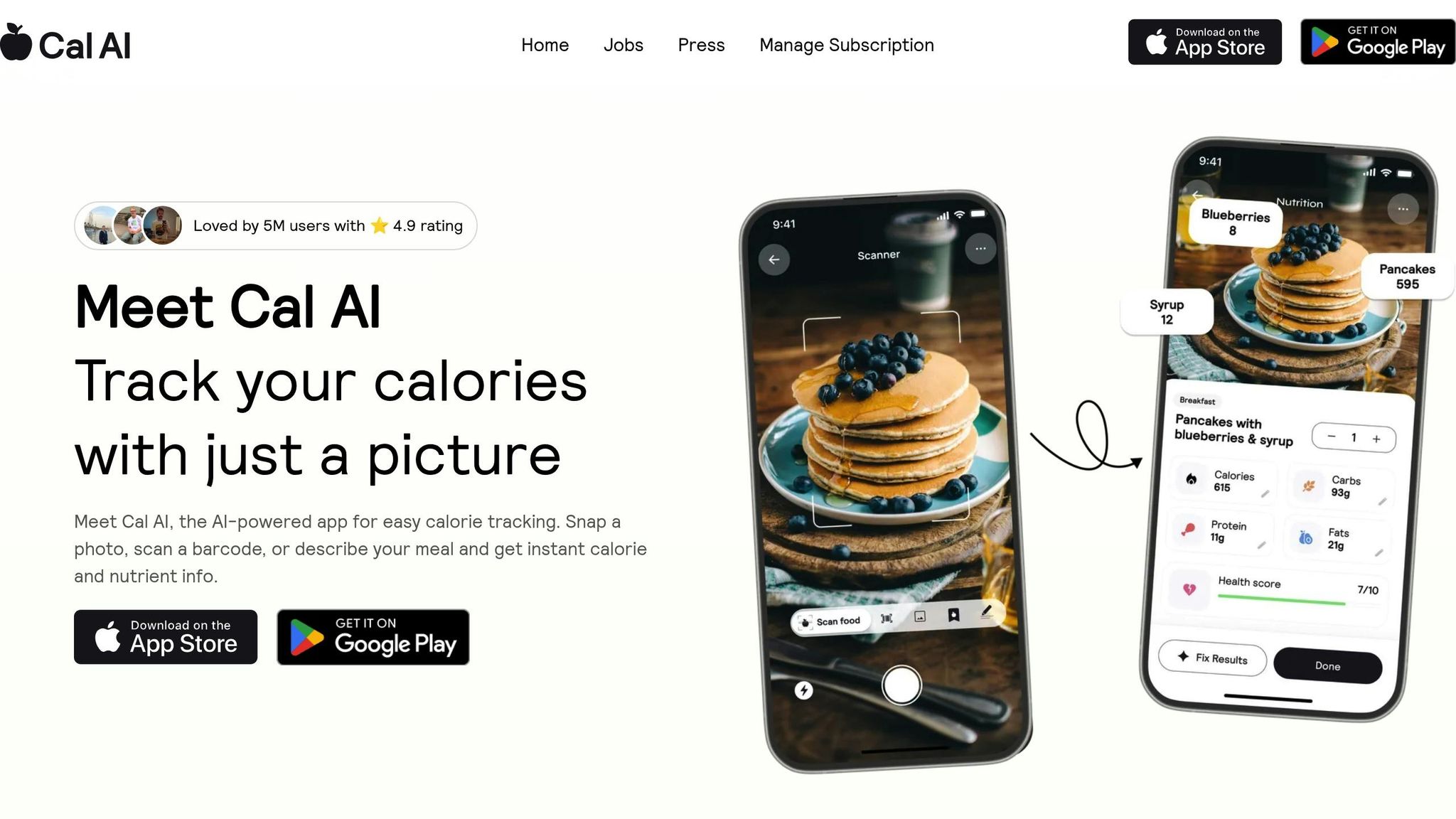
Cal AI combines deep learning image recognition with flexible food logging options to provide detailed nutritional analysis. It’s designed to accommodate users who prefer different ways of tracking meals, making it a versatile tool for keeping tabs on your diet. Let’s dive into how Cal AI stands out with its multi-method tracking approach.
AI Food Detection and Macro Tracking Accuracy
Cal AI uses advanced deep learning algorithms to recognize food items from photos. Its standout feature is the flexibility it offers in food tracking. You can snap a photo of your meal, scan barcodes, or manually enter food items if the AI needs a bit of help.
The app’s visual recognition system analyzes food images and matches them with nutritional databases, ensuring accurate tracking even for complex or unfamiliar dishes. This layered approach makes it reliable for a wide range of foods and dining situations.
Food Group Analysis Depth
Cal AI takes nutritional tracking a step further by breaking down foods into categories like proteins, grains, vegetables, fruits, and dairy. It doesn’t stop there – it also shows how each group contributes to your intake of protein, carbohydrates, and fats.
This detailed breakdown helps users see more than just their daily macro totals. For example, you can check if you’re getting enough protein from a variety of sources or whether your carbohydrate intake leans too heavily on processed grains rather than whole foods.
Integration with US-Based Measurement Units and Databases
Designed with American users in mind, Cal AI uses US measurement standards, displaying portion sizes in cups, ounces, and pounds. Nutritional values align with standard US food labeling conventions, making it easy to understand and use.
The app also syncs with Apple Health, allowing users to integrate their macro data seamlessly. You can set personalized calorie and macro goals tailored to your dietary needs, whether you’re aiming for weight loss, muscle building, or overall health improvement.
sbb-itb-034be4e
4. MyFitnessPal
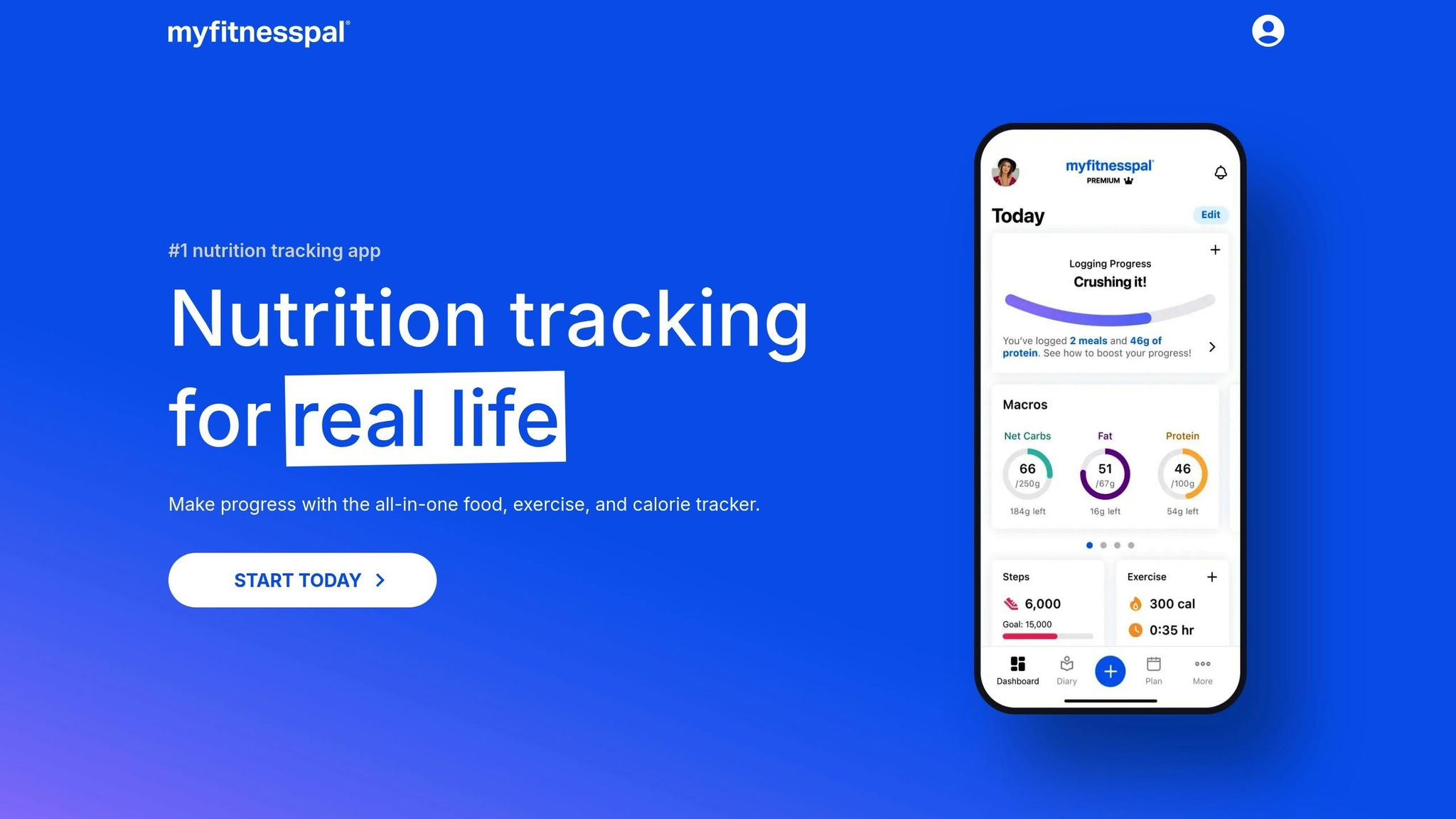
MyFitnessPal stands out as a well-established nutrition tracker, blending its extensive food database with newer AI-driven features. With a database boasting 14 million food items, it offers a reliable platform for tracking macros. Though it doesn’t focus heavily on AI-powered photo recognition, its recent addition of voice-based logging has made tracking more convenient and hands-free.
AI Food Detection and Macro Tracking Accuracy
Rather than relying on photo recognition, MyFitnessPal uses AI in a more practical way. Through its partnership with Tribe AI, the app now supports voice logging and provides personalized meal suggestions. Users can simply speak their meals into the app, and it logs them with impressive accuracy. Combined with its robust food database and a barcode scanner, the app ensures precise macro tracking. Expert reviews highlight its accuracy, especially when users stick to verified database entries. This blend of AI and traditional tools keeps the tracking process efficient and user-friendly.
Food Group Analysis Depth
MyFitnessPal delivers detailed macronutrient breakdowns for meals and daily totals, but it doesn’t automatically sort foods into specific groups like "protein from meat" or "carbs from grains." Instead, users can view overall figures for protein, carbs, and fats. For those seeking deeper insights, the app allows custom tags for categorizing foods manually. While this approach offers flexibility, it contrasts with apps that provide fully automated food group analysis.
Serving Size Estimation Capabilities
When it comes to serving sizes, MyFitnessPal supports standard units like cups, ounces, and grams. Its barcode scanner pulls serving size data straight from product labels, ensuring accuracy. Users can also add custom food entries if needed. However, the app lacks AI-powered photo-based portion estimation, meaning users must rely on their own measurements or estimations for precise logging.
Integration with US-Based Measurement Units and Databases
MyFitnessPal is tailored for American users, supporting imperial units like ounces, pounds, and cups. It integrates seamlessly with popular US fitness trackers such as Apple Health, Fitbit, and Garmin. The food database reflects American eating habits, covering everything from restaurant chains to regional grocery brands. Additionally, the app adheres to US conventions for dates and spelling, making it intuitive for local users.
As of October 2025, MyFitnessPal holds an impressive 4.7/5 rating from 1.5 million Apple App Store reviews. Users frequently praise its comprehensive database and seamless compatibility with US measurement standards, solidifying its place as a go-to nutrition tracker.
5. HealthifyMe
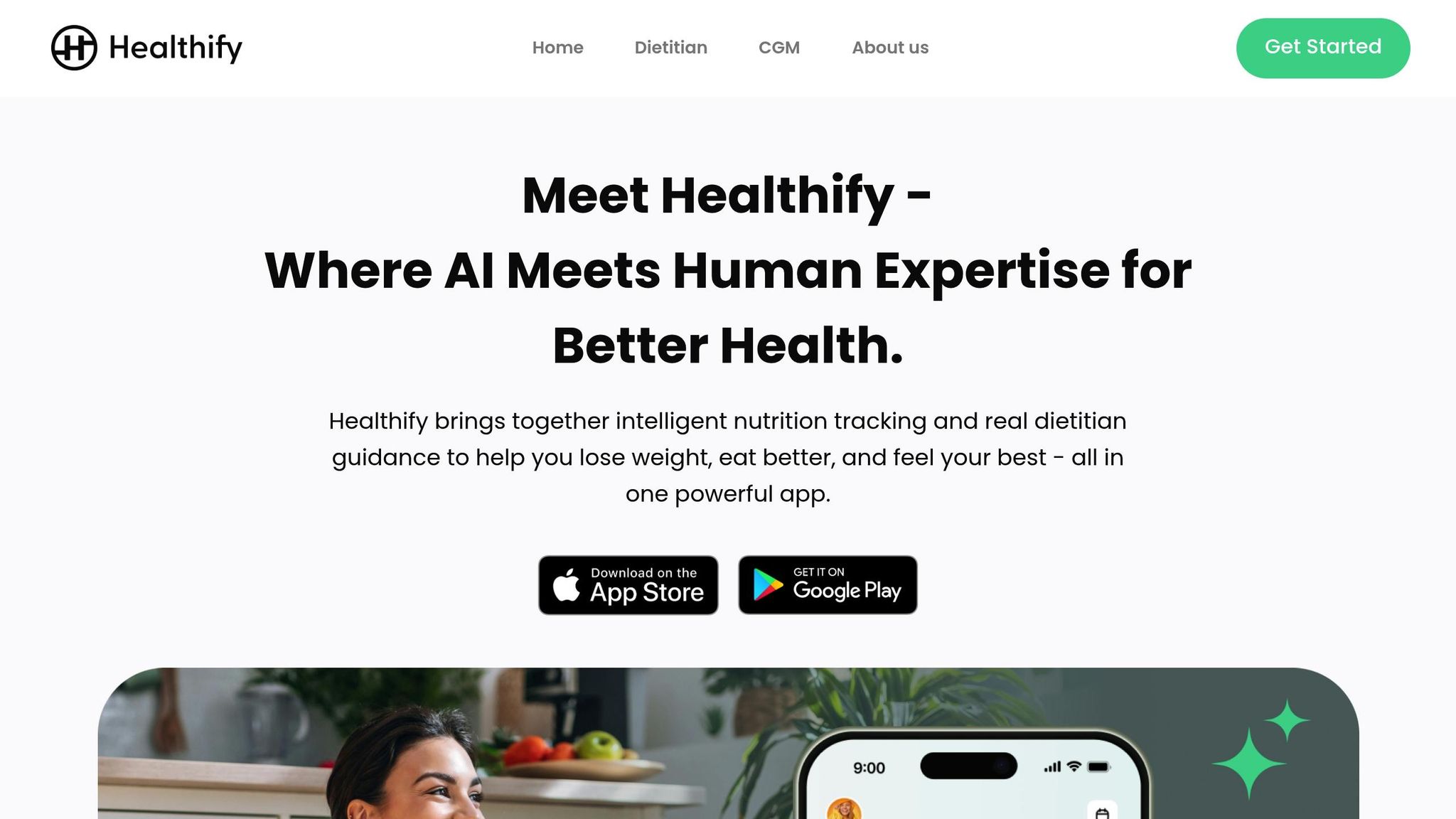
HealthifyMe brings a fresh perspective to AI-powered nutrition tracking with its virtual assistant, Ria, acting as a personalized AI nutritionist. Instead of relying heavily on photo-based recognition, HealthifyMe combines AI-driven analysis with tailored meal planning and health coaching. Studies suggest that using HealthifyMe can lead to better adherence to nutritional goals. By focusing on personalized, US-centric nutrition tracking, the app offers tools and guidance that make it easier for users to stay on track.
AI Food Detection and Macro Tracking Accuracy
Ria, HealthifyMe’s AI nutritionist, takes a detailed approach to analyzing meals and tracking macronutrients. Unlike apps that depend primarily on image-based food recognition, HealthifyMe uses a mix of manual logging, barcode scanning, and AI-driven insights to ensure accurate macro tracking. This method helps create diet plans tailored to individual needs, which can lead to better long-term success.
Food Group Analysis Depth
HealthifyMe excels in categorizing foods into standard groups like proteins, carbohydrates, fats, fruits, and vegetables. Its extensive database includes a wide range of regional and international foods, making it easy for users to log items from various cuisines. This detailed categorization supports diverse dietary preferences and provides accurate nutritional insights, catering to the variety of foods commonly enjoyed in the US.
Serving Size Estimation Capabilities
The app simplifies portion tracking with visual guides and pre-set serving sizes. Users can manually adjust entries or integrate kitchen scales for even greater precision.
Integration with US-Based Measurement Units and Databases
HealthifyMe is designed with the US market in mind, offering support for measurement units like ounces, cups, and pounds. It also connects with local grocery and restaurant databases, as well as popular wearables like Fitbit and Apple Watch, to streamline tracking and enhance the user experience.
Feature Comparison Table
Here’s a detailed comparison of key features, pricing, and capabilities for various AI macro trackers. This table provides a quick, side-by-side look at how each tool stacks up.
| Tool | AI Detection Method | Macro Tracking | Food Group Analysis Depth | Serving Size Estimation | Monthly Price (US$) | Key Benefits | Primary Limitations |
|---|---|---|---|---|---|---|---|
| What The Food | Computer vision + deep learning + food recognition LLM | Complete macro breakdown (protein, carbs, fat) | Moderate – identifies multiple items per image; trained on thousands of global dishes | Analyzes plate area and food volume from photos | Free (always) | ~98% accuracy, instant results, no signup required, ad-free | Limited advanced analytics and meal history storage |
| SnapCalorie | LiDAR technology + advanced image recognition | Full macronutrient tracking with detailed breakdowns | High | Highly accurate 3D volume estimation using LiDAR | Free / $9.99/month premium | Superior portion accuracy; performs well in good lighting | Requires good lighting for optimal performance |
| Cal AI | Deep learning image analysis + barcode scanning | Complete macro tracking with personalized targets | Moderate – covers standard food groups with AI-powered insights | Photo-based estimation with manual adjustment options | Free / $7.99/month premium | Affordable premium tier; combines multiple detection methods | Smaller database of regional and cultural foods |
| MyFitnessPal | Extensive database + barcode scanning + voice logging | Advanced macro tracking with customizable targets | High – one of the largest nutrition databases available | Manual entry, photo logging, and barcode-based portions | Free / $19.99/month premium | Massive food database; recipe creation; wearable integration | Many features locked behind the premium paywall |
| HealthifyMe | AI nutritionist "Ria" + database matching + manual logging | Personalized macro plans with AI coaching | Very high – extensive regional foods and cultural cuisine coverage | Manual or photo-based logging | Free / $12/month premium | AI nutritionist support; improved adherence to diet plans | Some features vary by geographic region |
Pricing reflects October 2025 monthly subscription rates in US dollars.
- What The Food stands out as the only completely free option, making it accessible to everyone.
- SnapCalorie excels in serving size accuracy, thanks to its advanced LiDAR technology.
- MyFitnessPal boasts the largest food database, while HealthifyMe shines with its focus on regional and cultural cuisine.
- Cal AI offers an affordable premium plan and combines multiple detection methods, though its database is smaller.
Each tool is designed to meet standard US measurement and formatting needs, ensuring ease of use for a wide audience.
Conclusion
AI-driven macro tracking tools have transformed the way we monitor nutrition, making meal tracking faster and more intuitive. With features like instant photo-based logging and quick, detailed nutritional analysis, these tools have taken the hassle out of traditional tracking methods.
What’s more, they offer a level of accuracy that’s hard to beat. For example, AI algorithms can estimate portion sizes by analyzing the plate’s area and food volume. Tools like What The Food boast an impressive ~98% accuracy rate for common foods, putting them on par with traditional weighing methods but with far less effort.
Personalization is another standout feature. These tools don’t just track what you eat; they help you stick to your goals. A study published in the Journal of Medical Internet Research revealed that users of HealthifyMe adhered to their nutrition plans more effectively than those using older tracking methods. Plus, with databases covering thousands of global and regional dishes, tools like What The Food and HealthifyMe make it easier than ever to track diverse cuisines accurately.
Of course, your choice of tool depends on your preferences. If you like visual logging, photo-based tools are a great fit. On the other hand, if your diet includes everything from home-cooked meals to restaurant dishes, a tool with a comprehensive database might be better suited to your needs.
Cost is another factor to consider. While premium features like advanced analytics and coaching are available, free options like What The Food prove that you don’t have to spend money to get reliable macro tracking.
Looking ahead, the future of these tools is all about going beyond calorie counting. Features like metabolic response tracking, energy level monitoring, and habit-building support are paving the way for a more holistic approach to health – focusing on long-term well-being rather than just weight management.
Ultimately, the right tool is the one that aligns with your goals and lifestyle. Whether you value precision, ease of use, or in-depth nutritional insights, there’s an AI-powered solution ready to help you succeed.
FAQs
How do AI tools determine portion sizes from food photos without manual input?
AI tools like What The Food leverage cutting-edge image recognition and machine learning to analyze photos of meals and estimate portion sizes. By identifying the food items in an image and cross-referencing them with an extensive nutritional database, the tool can automatically calculate serving sizes.
This means users can instantly access detailed information, including calorie counts, macronutrient breakdowns, and even preparation tips, without the hassle of entering data manually.
How do free and premium AI tools differ in their macro tracking features?
Free AI tools like What The Food make tracking macros simple by offering features like food detection, calorie counts, and macronutrient analysis – all from a quick meal photo. That said, free versions often come with restrictions, such as a limited number of daily analyses or reduced access to advanced tools.
Premium versions, on the other hand, typically unlock more options. These might include unlimited scans, in-depth nutritional insights, personalized meal planning, or even recipe suggestions. For most users, though, the free version of What The Food provides more than enough functionality for everyday macro tracking without requiring a subscription.
How do AI nutrition apps accommodate different diets and cuisines?
AI nutrition apps, such as What The Food, offer a handy way to get detailed nutritional breakdowns by simply analyzing food photos. These tools can estimate calories, macronutrients, serving sizes, and more – even for meals with multiple ingredients and diverse components.
What’s impressive is their ability to accommodate various dietary needs and regional dishes. They recognize a broad spectrum of foods and provide nutritional estimates tailored to these preferences. While their accuracy for common foods typically falls between 85–90%, it can fluctuate based on factors like image quality and how intricate the dish is.
